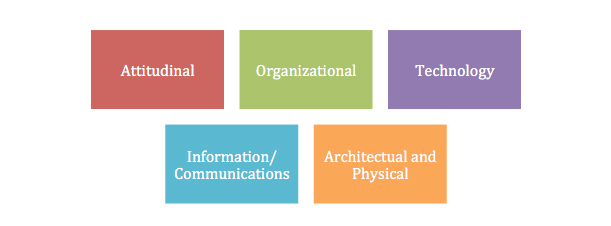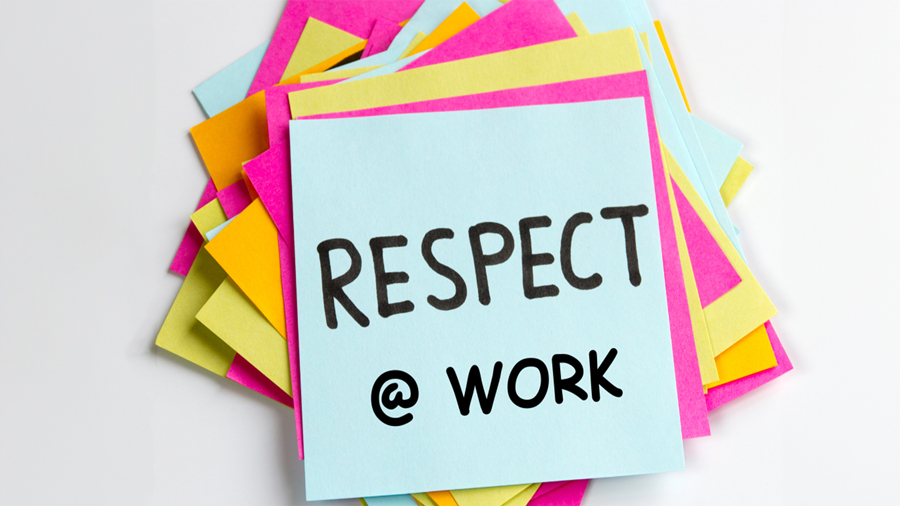What is Considered a Disability?
We cannot always tell who has a disability. Disability is defined under the AODA and the OHRC as follows:
Visible, Invisible, Temporary or Permanent
It is:
- Any degree of physical disability, infirmity, malformation or disfigurement that is caused by bodily injury, birth defect or illness and, without limiting the generality of the foregoing, includes diabetes mellitus, epilepsy, a brain injury, any degree of paralysis, amputation, lack of physical coordination, blindness or visual impediment, deafness or hearing impediment, muteness or speech impediment, or physical reliance on a guide dog or other animal or on a wheelchair or other remedial appliance or device,
- A condition of mental impairment or a developmental disability,
- A learning disability, or a dysfunction in one or more of the processes involved in understanding or using symbols or spoken language,
- A mental disorder, or
- An injury or disability for which benefits were claimed or received under the insurance plan established under the Workplace Safety Insurance Act, 1997.
What are Barriers to Accessibility?
Barriers to accessibility are obstacles that make it difficult — sometimes impossible — for people with disabilities to do the things most of us take for granted — like going shopping, working, or taking public transit.
When we think of barriers to accessibility, most of us think of physical barriers — like a person who uses a wheelchair not being able to enter a public building because there is no ramp.
The fact is there are many kinds of barriers. Some are visible. Many are invisible.
Barriers to accessibility prevent people with disabilities from fully taking part in the social and economic life of our communities.
It is important to note that disability itself is not a barrier, but barriers exist that can exclude people with disabilities.
Five Categories:

Attitudinal barriers are those that discriminate against people with disabilities.
Attitudinal barriers are those that discriminate against people with disabilities.
Technology barriers occur when a technology can’t be modified to support various assistive devices.
Organizational (systemic) barriers are an organization’s policies, practices or procedures that discriminate against people with disabilities
What does Accessibility Look Like?
Accessibility simply means giving people of all abilities the opportunity to participate fully in everyday life. In the workplace, this means giving all workers — those with and without disabilities — opportunities to perform the job duties that they were hired to fulfill. People with disabilities require different forms of accommodation to remove barriers that keep them from participating fully in their workplace or community.
What are Accommodations?
As you have already learned, those with disabilities are frequently excluded by many kinds of physical, attitudinal and organizational barriers.
Accommodating the individual needs of people with disabilities is a legal duty under the Code. This allows people with disabilities to take part fully in the workplace with dignity.
The accommodation process is a shared responsibility between the worker, the employer and unions, if appropriate. In fact, it is everyone’s responsibility to accommodate.
The most appropriate accommodation is the one that best meets the individual needs of the person with a disability. There is no set formula for accommodation. Some accommodations can benefit many people as well!
Examples of Workplace Accommodations:
Physical Accommodations:
- Head phones to reduce noise
- Lamp at workstation instead of fluorescent lights (which cause flickering)
- Allowing tape recorder for meetings or when being given instructions
- Voice input or voice recognition aids
- Voice synthesizer
- TTY phone service
- Computer screen magnifiers
- Quiet workspaces
Work Style Accommodations:
- Larger tasks divided into smaller tasks
- Flexible hours or work from home arrangements
- Modified or individualized training
- Modified job duties or job sharing
- Written instructions
- Self-paced workload
- Frequent breaks
- Alternate methods of communication (phone, tape recorder, email, verbal etc.)
Why Accessibility in the Workplace is a Good Thing
Accessibility is good business. By 2031, over 6 million people in Ontario will be either living with a disability or will be 55 years of age and over, accounting for 40% of all income.
- As boomers age, it is expected that they will drive society to meet their needs and demands. This is a huge demographic that cannot be ignored.
- By learning how to serve people with disabilities, businesses may attract more customers, build customer loyalty and improve their services for everyone.
- With the aging population, consumers are increasingly members of the disability community.
HR Proactive Inc. is committed to increasing knowledge an awareness of accessibility for persons with disabilities.











